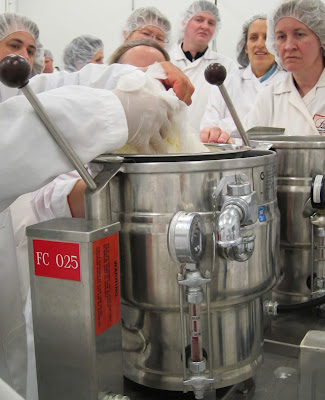Made to Stick: why some ideas survive and others die
 All of us, every day of our lives, attempt to share information. Far too often, what we say goes unheard or misunderstood. Made to Stick: why some ideas survive and others die by Chip Heath and Dan Heath provides six key ingredients for making sure that our ideas are useful and lasting and stick in our audience’s heads.
All of us, every day of our lives, attempt to share information. Far too often, what we say goes unheard or misunderstood. Made to Stick: why some ideas survive and others die by Chip Heath and Dan Heath provides six key ingredients for making sure that our ideas are useful and lasting and stick in our audience’s heads. SIMPLE – What is the essential core of our message? Can we distil our key idea so that it is simple and yet profound? Proverbs are extremely simple so they’re easy to remember; and yet the message is often profound and applicable to many different situations.
UNEXPECTED – At first glance, there appears to be a piece of duct tape stuck to the front cover of Made to Stick. It catches your eye, and it reinforces the theme of the book. Our message needs to surprise listeners enough that they sit up and start paying attention.
CONCRETE – The Heaths emphasize that although language is often abstract, life isn’t: “Even the most abstract business strategy must eventually show up in the tangible actions of human beings. It’s easier to understand those tangible actions than to understand an abstract strategy statement.” For example, list six objects that are white. Now list six objects in your refrigerator which are white. It’s easier to identify white objects in our refrigerators because we can visualize a concrete object.
CREDIBLE – We tend to rely on authority figures or statistics to assure our public that our ideas are reliable and trustworthy. But often that isn’t enough. In his book The 8th Habit, Stephen Covey describes a survey of 23,000 employees. Only 37% said they had a clear understanding of what their organization was trying to achieve, and only 20% fully trusted the organization they worked for. There’s food for thought in those statistics, but the information becomes truly compelling when Covey uses a very human metaphor to describe the statistics. “He says, ‘If, say, a soccer team had these same scores, only 4 of the 11 players on the field would know which goal is theirs. . . . And all but 2 players would, in some way, be competing against their own team members rather than the opponent.’”
EMOTIONAL – Made to Stick explains that we get people to care about our ideas by making them feel something. “Research shows that people are more likely to make a charitable gift to a single needy individual than to an entire impoverished region. We are wired to feel things for people, not for abstractions.” So non-profit organizations ask us to become foster parents or to buy a goat or a chicken.
This applies in business as well. Made to Stick describes the Pegasus Army canteen outside of Baghdad. It became renowned for serving good, attractive food. There were tablecloths, soft lighting and the waiters wore tall white chef’s hats. Floyd Lee, the man in charge of Pegasus, says that he is not in charge of food service – he is in charge of morale. And that attitude shapes how his staff performs its job. One cook ordered spices from New Orleans to enhance the entrees. The dessert table features five kinds of pie and three kinds of cake, and a dessert chef describes her strawberry cake as “sexual and sensual.” For the time that they are at dinner, the soldiers can forget that they are in a war zone. “In redefining the mission of his mess hall, he [Floyd Lee] has inspired his co-workers to create an oasis in the desert.”
STORIES – Gary Klein is a psychologist who studies how people make decisions in high-pressure, high-stakes environments (e.g. firefighters, air-traffic controllers). “Klein says that, in the environments he studies, stories are told and retold because they contain wisdom. Stories are effective teaching tools. . . . Stories illustrate causal relationships that people hadn’t recognized before and highlight unexpected, resourceful ways in which people have solved problems.” If we make an argument to deliver a message, our audience will evaluate it, debate it, criticize it. But if we tell a story, the audience shifts into problem-solving mode. They empathize with the main characters and cheer them on. The story becomes a springboard as listeners apply what they are hearing to their own lives.
Made to Stick is full of concrete examples of people who “distinguished themselves by crafting ideas that made a difference. They didn’t have power or celebrity or PR firms or advertising dollars or spinmeisters. All they had were ideas. And that’s the great thing about the world of ideas – any of us, with the right insight and the right message, can make an idea stick.”




Comments